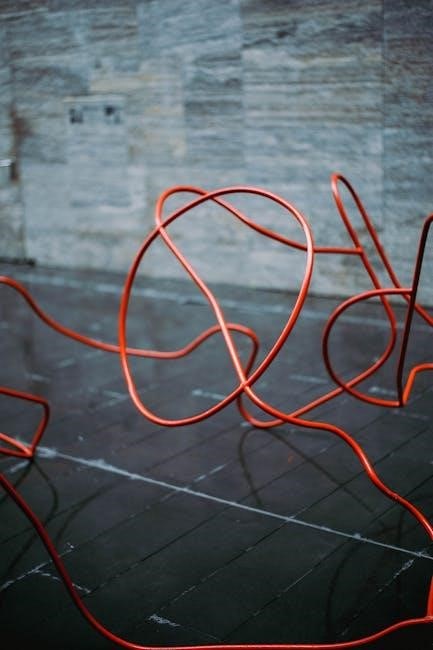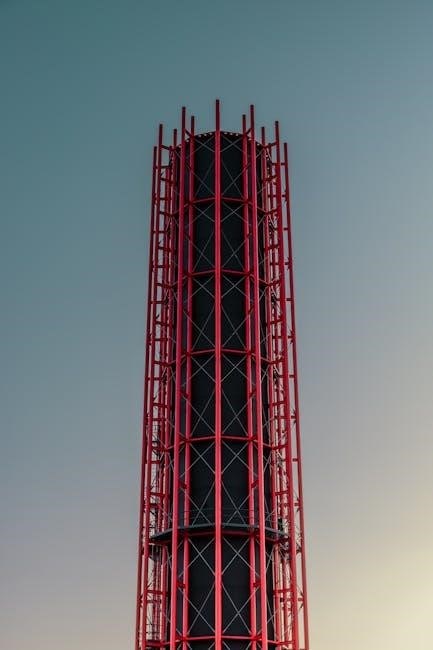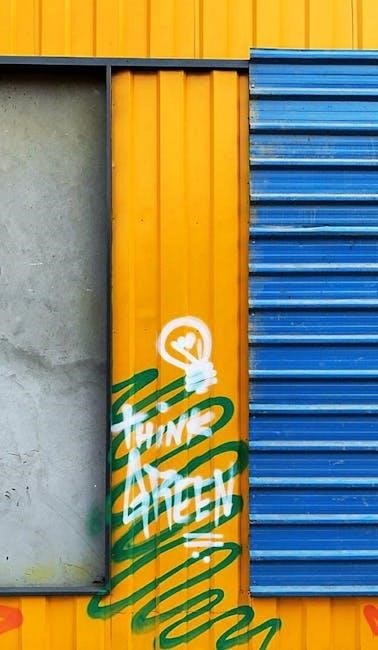Vertical metal siding installation is a complex process requiring careful planning and execution, using various tools and equipment, and following specific guides and instructions to ensure success and durability always matters;
Importance of Proper Installation
Proper installation of vertical metal siding is crucial for the longevity and performance of the siding․ A well-installed siding can provide a durable and low-maintenance exterior finish, while a poorly installed one can lead to various problems, including water intrusion, structural damage, and reduced energy efficiency․ The installation process requires attention to detail, careful planning, and adherence to manufacturer instructions and industry standards․ A proper installation also ensures that the siding is securely fastened to the building, can withstand various weather conditions, and maintains its appearance over time․ Additionally, a correct installation can help prevent common issues such as gaps, cracks, and unevenness, which can compromise the siding’s performance and lead to costly repairs․ By following a comprehensive installation guide, homeowners and builders can ensure a successful and trouble-free installation of vertical metal siding․ This guide provides step-by-step instructions and helpful tips to achieve a professional-looking finish․

Pre-Installation Requirements
Pre-installation requirements include checking building codes, permits, and weather conditions always before starting the project with necessary tools and equipment readily available and accessible online․
Tools and Equipment Needed
To ensure a successful installation, it is essential to have the right tools and equipment, including cutting tools, drills, and fasteners, as well as safety gear like gloves and harnesses, readily available and accessible․
The list of necessary tools and equipment may vary depending on the specific type of vertical metal siding being installed, but generally includes items like snap-on corner posts, outside corner post caps, and corner substrates․
Additionally, having a reliable ladder or scaffolding system is crucial for accessing high areas of the building, and a tape measure and level can help ensure accurate and level installation․
It is also important to have a clear understanding of the tools and equipment needed, and to follow proper safety protocols when using them, to avoid injuries and ensure a successful installation․
By having the right tools and equipment, and using them correctly, installers can ensure a professional-looking and durable vertical metal siding installation․

Edco Steel Siding Installation Guide
Edco steel siding installation guide provides detailed instructions for traditional lap, dutchlap, and vertical board and batten siding installations always with specific tools and equipment lists provided․
Traditional Lap, Dutchlap, and Vertical Board and Batten Siding
Traditional lap, dutchlap, and vertical board and batten siding are popular choices for metal siding installations, each with its own unique characteristics and installation requirements, as outlined in the Edco steel siding installation guide․
The guide provides detailed instructions for installing these types of siding, including the use of specific tools and equipment, such as cutting tools and snap-on corner post caps․
It also covers the importance of proper substrate preparation and the use of accessories like outside corner posts and corner substrates․
By following the guide, installers can ensure a successful and durable installation, regardless of the type of siding being used․
The guide is a valuable resource for anyone involved in metal siding installations, providing the information and guidance needed to get the job done right․
With its comprehensive coverage of traditional lap, dutchlap, and vertical board and batten siding installations, the Edco steel siding installation guide is an essential tool for the trade․
Vertical Metal Siding Installation Process
Installation involves measuring, cutting, and attaching metal panels to the wall, using specific tools and equipment, following a detailed process to ensure success always matters every time completely․
Step-by-Step Instructions for a Successful Installation
To ensure a successful installation, it is essential to follow a series of step-by-step instructions․ First, prepare the site by clearing the area of debris and ensuring the wall is level and plumb․ Next, measure and cut the metal panels to the required size, using a cutting tool specifically designed for metal․ Then, attach the panels to the wall, starting from the bottom and working upwards, using a fastening system that is suitable for the type of metal siding being used․ It is also important to ensure that the panels are properly aligned and spaced, and that all joints and seams are sealed to prevent water infiltration․ Additionally, the installation guide should be consulted regularly to ensure that all instructions are being followed correctly, and that the installation is proceeding as planned, with all necessary tools and equipment readily available․

Benefits of Vertical Metal Siding
Vertical metal siding offers durability and resistance to weathering, with a long lifespan and minimal maintenance required always and low cost․
Fire Resistance, Recyclability, and Attractiveness
Vertical metal siding has several benefits, including fire resistance, recyclability, and attractiveness, making it a popular choice for homeowners and builders, with a wide range of styles and colors available to suit different tastes and architectures․
The fire resistance of vertical metal siding is due to its non-combustible materials, which prevent the spread of flames and reduce the risk of fire damage, providing a safe and secure exterior for homes and buildings․
The recyclability of vertical metal siding is also a significant advantage, as it can be made from recycled materials and can be recycled itself at the end of its lifespan, reducing waste and minimizing environmental impact․
Additionally, vertical metal siding is attractive and can enhance the appearance of a home or building, with a variety of finishes and textures available to suit different design styles and preferences, making it a versatile and practical choice for exterior cladding․

Common Mistakes to Avoid During Installation
Incorrect measurements and insufficient fastening are common mistakes to avoid during vertical metal siding installation for a successful project always․
Troubleshooting Tips for a Smooth Installation Process
To ensure a smooth installation process, it is essential to identify and address potential issues promptly․ Troubleshooting tips can help installers overcome common challenges, such as uneven panels, loose fasteners, and damaged materials․ By following a systematic approach to troubleshooting, installers can quickly diagnose and resolve problems, minimizing delays and ensuring a successful installation․ Effective troubleshooting requires a combination of technical knowledge, attention to detail, and problem-solving skills․ Installers should be familiar with the installation guide and manufacturer’s instructions to troubleshoot issues efficiently․ Additionally, maintaining a clean and organized work site can help prevent errors and reduce the risk of accidents․ By being proactive and addressing potential issues promptly, installers can ensure a smooth and successful installation process, resulting in a high-quality finish and a satisfied customer․ This approach can also help to reduce costs and improve overall efficiency․
